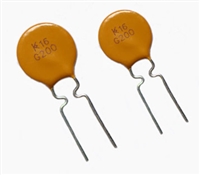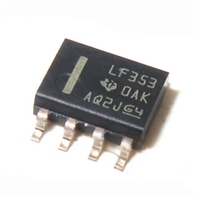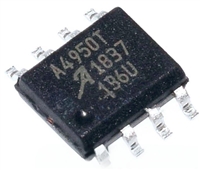Triple Output/TWR Models
Isolated, High Reliability 1" x 2" DC/DC Converters
Safety Considerations
Isolation Considerations
The TWR’s must be installed with consideration for any local safety,
certification or regulatory requirements. These vary widely but generally
are concerned with properly sized conductors, adequate clearance between
higher voltage circuits, life testing, thermal stress analysis of components
and flammability of components. Contact DATEL if you need further advice
on these topics.
These converters use both transformer and optical coupling to isolate
the inputs from the outputs. Ideal “floating” isolation implies ZERO CUR-
RENT flowing between the two Common return sections of the input and
output up to the working isolation voltage limit. Real-world isolation on this
converter includes both an AC current path (through some small coupling
capacitance) and some DC leakage current between the two ground
systems. To avoid difficulties in your application, be sure that there are not
wideband, high amplitude AC difference voltages between the two ground
systems. In addition, ground difference voltages applied by your external
circuits which exceed the isolation voltage, even momentarily, may damage
the converter’s isolation barrier. This can either destroy the converter or
instantly render it non-isolated.
Remote On/Off Control
The TWR models include an input pin which can turn on or shut off the
converter by remote signal. For positive logic models (no model number
suffix), if this pin is left open, the converter will always be enabled as long
as proper input power is present. On/Off signal currents are referred to the
Input Common pin on the converter. There is a short time delay of several
milliseconds (see the specifications) for turn on, assuming there is no
significant external output capacitance.
Current Limiting and Short Circuit Condition
As the output load increases above its maximum rated value, the
converter will enter current limiting mode. The output voltage will decrease
and the converter will essentially deliver constant power. This is commonly
called power limiting.
The On/Off Control may also be supplied with negative logic (LO = on, HI
= off) using the “N” model number suffix. Here again, leaving the pin open
on either model will enable the converter. Positive logic models must have
this control pin pulled down for shutoff. Negative logic models must pull up
this control pin for shutoff.
If the current continues to increase, the converter will enter short circuit
operation and the PWM controller will shut down. Following a time-out
period, the converter will automatically attempt to restart. If the short
circuit is detected again, the converter will shut down and the cycle will
repeat. This operation is called hiccup autorecovery. Please be aware
that excessive external output capacitance may interfere with the hiccup
autorestart.
Dynamic control of this On/Off input is best done with either a mechani-
cal relay (ground the pin to turn it off), solid state relay (SSR), an open
collector or open drain transistor, CPU bit or a logic gate. The pull down
current is 18mA max. Observe the voltage limits listed in the specifications
for proper operation. Suggested circuits are shown below.
Output Filtering and Noise Reduction
ꢂ).054
All switching DC/DC converters produce wideband output noise which
radiates both through the wiring (conducted emission) and is broadcast
into the air (radiated emission). This output noise may be attenuated by
adding a small amount of capacitance in parallel with the output terminals.
Please refer to the maximum output capacitance in the Specifications.
#-/3
,/')#
/.ꢀ/&&
#/.42/,
#/.42/,,%2
() ꢈ /.
,/ ꢈ /&&
The amount of capacitance to add depends on the placement of the cap
(near the converter versus near the load), the distance from the converter
to the load (and resulting series inductance), the topology and locations
of load elements if there are multiple parallel loads and the nature of the
loads. For switching loads such as CPU’s and logic, this last item recom-
mends that small bypass capacitors be placed directly at the load. Very
high clock speeds suggest smaller caps unless the instantaneous current
changes are high. If the load is a precision high-gain linear section, addi-
tional filtering and shielding may be needed.
3)'.!,
'2/5.$
#/--/.
Figure 3. On/Off Control With An External CMOS Gate
ꢂ).054
Many applications will need no additional capacitance. However, if more
capacitance is indicated, observe these factors:
ꢃꢉK7 ꢌ49 ꢇꢍ
/04)/.!, 05,,50
2%3)34/2
1. Understand the noise-reduction objective. Are you improving the switch-
ing threshold of digital logic to reduce errors? (This may need only a
small amount of extra capacitance). Or do you need very low noise for a
precision linear “front end”?
/.ꢀ/&&
#/.42/,
#/.42/,,%2
3-!,,
3)'.!,
42!.3)34/2
3)'.!,
'2/5.$
2. Use just enough capacitance to achieve your objective. Additional
capacitance trades off increasing instability (actually adding noise rather
than reducing it), poor settling response, possible ringing or outright
oscillation by the converter. Excessive capacitance may also disable
the hiccup autorestart. Do not exceed the maximum output capacitance
specification.
() ꢈ /&&
,/ ꢈ /.
#/--/.
Figure 4. On/Off Control With An External Transistor
www.murata-ps.com
Technical enquiries email: sales@murata-ps.com, tel: +1 508 339 3000
MDC_TWR22.B02 Page 5 of 9






 NTC热敏电阻与PTC热敏电阻的应用原理及应用范围
NTC热敏电阻与PTC热敏电阻的应用原理及应用范围

 GTO与普通晶闸管相比为什么可以自关断?为什么普通晶闸管不能呢?从GTO原理、应用范围带你了解原因及推荐型号
GTO与普通晶闸管相比为什么可以自关断?为什么普通晶闸管不能呢?从GTO原理、应用范围带你了解原因及推荐型号

 LF353数据手册解读:特性、应用、封装、引脚说明、电气参数及替换型号推荐
LF353数据手册解读:特性、应用、封装、引脚说明、电气参数及替换型号推荐

 A4950资料手册解读:特性、应用、封装、引脚功能、电气参数及代换型号
A4950资料手册解读:特性、应用、封装、引脚功能、电气参数及代换型号
